-
Quickly, inexpensively locating short circuits in power grids
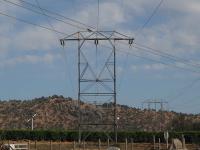
When a high-voltage power line is damaged by wind, ice, or a tree, electricity utilities must quickly find the fault location and repair it to meet the power quality requirements or avoid cascade blackout. In the common practice, they locate the fault by first identifying the section without power through the use of sensors placed at regular intervals along the power line. A technician must then go to that section and visually inspect the line in order to find the fault location. Researchers have come up with a new method, which is faster and less expensive, for precisely determining where the short circuit takes place.
-
-
Pre-drilling computer analysis could limit fracking-induced earthquakes
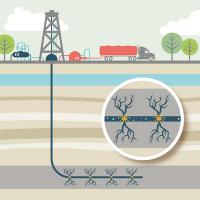
Hydraulic fracturing, also known as “fracking,” is used to break the subsurface rock mass into pieces and is done by injecting high-pressure fluid. While this gives the fluid or gas more paths to reach production wells, it also leads to several environmental problems, one of which is the unwanted shaking of the ground structures caused by the movement of large faults. Using computer analysis prior to drilling could limit seismic events as a result of hydraulic fracturing.
-
-
Actions can change outcomes of wildfires in wildland urban interface (WUI)
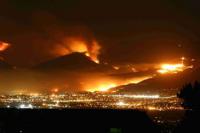
The ten years since 2002 saw an annual average of nearly 71,000 wildland urban interface (WUI) fires recorded and 1.9 million hectares (4.7 million acres) burned. Today, more than 32 percent of U.S. housing units and one-tenth of all land with housing are situated in the nation’s 89 million hectares (220 million acres) of WUI, putting approximately 72,000 communities and more than 120 million people at risk. A new study demonstrates that prompt and effective action can significantly change the outcome of fires that occur in WUI — areas where residential communities and undeveloped wildlands meet.
-
-
Fighting fire with research results
Every year, devastating forest fires take place in Europe and around the world, destroying thousands of hectares of forests and severely impacting citizens and the environment. EU-funded research teams, mindful of the current and future risks, have been focusing their efforts on developing systems and tools that can help avert disaster.
-
-
Human-caused climate change increased severity of many extreme events in 2014
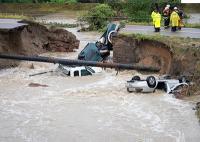
Human activities, such as greenhouse gas emissions and land use, influenced specific extreme weather and climate events in 2014, including tropical cyclones in the central Pacific, heavy rainfall in Europe, drought in East Africa, and stifling heat waves in Australia, Asia, and South America, according to a new report released the other day. The report, Explaining Extreme Events of 2014 from a Climate Perspective, published by the Bulletin of the American Meteorological Society, addresses the natural and human causes of individual extreme events from around the world in 2014, including Antarctica.
-
-
Global temperatures set to reach 1 °C marker for first time
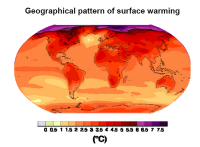
Met Office, the U.K. official weather service, says that data for 2015 so far shows that, for the first time, global mean temperature at the Earth’s surface is set to reach 1 °C above pre-industrial levels. This represents an important marker as the world continues to warm due to human influence. It is estimated that up to 2,900 Gigatonnes of CO2 (GtCO2) can be emitted to have a likely (more than 66 percent) chance of limiting warming to below 2 °C. The Met Office notes that as of 2014, about 2,000 GtCO2 had already been emitted, meaning society has used about two thirds of the 2 °C budget. This gives an indication that we are already committed to some level of further warming.
-
-
Smart grids better able to withstand climate change challenges
At the end of October 2012, Hurricane Sandy swept across the northeastern United States at speeds of more than 90 mph. Millions of people were left in the dark. In an era of climate change, energy management systems will have to become increasingly robust in order to withstand natural disasters like Sandy – and also floods, wildfires, heat waves, and droughts. The U.S. power supply — with more than 9,200 power plants and nearly half a million kilometers of overhead lines, about a third of a million miles – is already feeling the strain today. Smart Grid technologies have helped to make power grids more resilient to climate change challenges.
-
-
Game for climate adaptation
An MIT-led project takes the adage “think globally, act locally” to heart by demonstrated a new method for getting local citizens and leaders to agree on the best ways of managing the immediate and long-term effects of climate change. The project got local citizens and officials in four coastal towns to engage in role-playing games about climate change tailored to their communities — which in coastal communities may include rising sea levels and increased storm surges that can lead to flooding.
-
-
In the world of finance, consideration of climate change is now mainstream
As climate changes become impossible to dismiss, how does the mainstream investor community respond? Are financial decisions taking full account of risks and opportunities related to climate change, or is the topic still virtually ignored in financial decision-making?
-
-
Blitz spirit needed to meet challenges like climate change: Dr. Hugh Hunt
Today’s engineers will need the kind of drive and determination shown by the great wartime innovators such as Sir Barnes Wallis and Sir Frank Whittle if they are to respond effectively to challenges such as climate change, Dr. Hugh Hunt told the Royal Academy of Engineering on Tuesday. Hunt compared today’s challenge of adapting to future climate change with the imperative to develop new technologies to tip the balance of military capability in favor of the Allies during the Second World War.
-
-
Update issued for southeast Florida regional sea level rise projections
The four-county Southeast Florida Regional Climate Change Compact (Compact) has prepared an update to the regional sea level rise projections used for important planning purposes. Overall, the update includes minor changes to the short-term curves, but a more significant increase in the mid-and long-term projections. The 2015 update estimates sea level rise of 6 to 10 inches by 2030, or 3 to 5 inches above average sea level in 2015. Predictions for the mid-term are between 11 and 22 inches of additional sea level rise by 2060, and longer-term between 28 and 57 inches by 2100.
-
-
New York proposes new sea-level rise projection regulations
New York State Department of Environmental Conservation (DEC) announced last week that to better prepare New York State coastal communities and business owners for extreme weather events like Superstorm Sandy three years ago, DEC is proposing new state sea-level rise projections which will help state agencies and project planners develop more resilient structures. “The sea-level rise projections DEC is proposing today reflect the best science available,” said DEC acting commissioner. “Sea level projections will help state agencies, developers, planners and engineers to reduce risks posed by rising seas and coastal storms over the next several decades.”
-
-
California releases plan for preparing the state for extreme effects of climate change
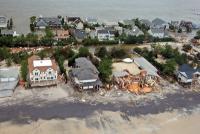
In response to a directive from California governor Edmund G. Brown Jr., the California Natural Resources Agency has been seeking public comment on a draft plan for how California will prepare for and adapt to the catastrophic effects of climate change, including extended droughts and wildfires, rising sea levels and increasingly extreme weather. The draft plan — Safeguarding California: Implementation Action Plans — identifies the state’s vulnerabilities to climate change and details steps that need to be taken across ten sectors including water, transportation, agriculture, biodiversity and habitat, emergency management, and energy.
-
-
Wildfires may double erosion across a quarter of western U.S. watersheds by 2050
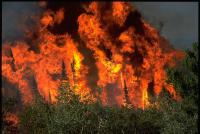
Wildfires, which are on the rise throughout the west as a result of prolonged drought and climate change, can alter soil properties and make it more vulnerable to erosion. A new study shows that the increase in wildfires may double soil erosion in some western United States by 2050, and all that dirt ends up in streams, clogging creeks and degrading water quality.
-
-
West Coast lawmakers ask Obama for $16.1 million to complete earthquake early warning system
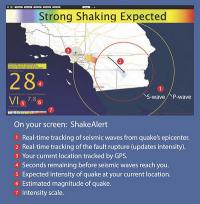
Last Wednesday thirty-six Members of Congress from western states urged President Barack Obama and the White House’s Office of Management and Budget to increase the funding level for earthquake hazards programs in their 2017 budget request — more specifically, to provide $16.1 million dollars in funding for an on-shore Earthquake Early Warning System (EEW) being developed by scientists in Southern California and along the West Coast. The lawmakers say that such an early warning system would be helpful in providing residents and first responders with advance notice that could help save lives, avoid injuries, and avert major infrastructure damage by slowing trains to prevent derailment, stopping elevators, pausing surgeries, and taking other actions in the event of a major earthquake.
-
- All
- Regional
- Water
- Biometrics
- Borders/Immig
- Business
- Cybersecurity
- Detection
- Disasters
- Government
- Infrastructure
- International
- Public health
- Public Safety
- Communication interoperabillity
- Emergency services
- Emergency medical services
- Fire
- First response
- IEDs
- Law Enforcement
- Law Enforcement Technology
- Military technology
- Nonlethal weapons
- Nuclear weapons
- Personal protection equipment
- Police
- Notification /alert systems
- Situational awareness
- Weapons systems
- Sci-Tech
- Sector Reports
- Surveillance
- Transportation
Advertising & Marketing: advertise@newswirepubs.com
Editorial: editor@newswirepubs.com
General: info@newswirepubs.com
2010-2011 © News Wire Publications, LLC News Wire Publications, LLC
220 Old Country Road | Suite 200 | Mineola | New York | 11501
Permissions and Policies
Editorial: editor@newswirepubs.com
General: info@newswirepubs.com
2010-2011 © News Wire Publications, LLC News Wire Publications, LLC
220 Old Country Road | Suite 200 | Mineola | New York | 11501
Permissions and Policies
